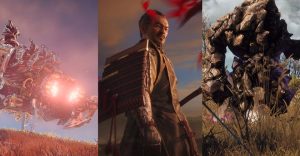How Mark Hamill Was De-aged For Young Luke Skywalker In Mandalorian

In a process becoming more and more common in Hollywood, here’s a breakdown of how The Mandalorian’s season 2 finale de-aged Mark Hamill as young Luke Skywalker. The Mandalorian wasn’t the first time Star Wars had used CGI and de-aging technology to bring back a character from the original trilogy – not even the first time for Hamill as Luke. In 2016’s Rogue One, Star Wars used a CGI mask for a stand-in actor to recreate Peter Cushing’s likeness as Grand Moff Tarkin as well as superimposing a young Carrie Fisher’s face as Princess Leia with images from Star Wars: A New Hope. Additionally, Star Wars: The Last Jedi used old footage from the original Star Wars trilogy to make young versions of Luke and Leia in a short flashback scene.
When approached to come back as a young Luke Skywalker, Jon Favreau told Mark Hamill they would be using the same de-aging technology implemented in Marvel movies, making the outcome similar to Kurt Russell’s de-aging in Guardians of the Galaxy 2. Hamill originally thought Luke would return as a young Jedi being played by a more age-appropriate actor, which was the consensus among speculative fans who theorized that Star Wars would cast MCU actor Sebastian Stan, who bears an uncanny resemblance to young Hamill, as Luke in the series. The Mandalorian’s team decided it would only happen if Mark Hamill agreed to lend his likeness, which he gladly accepted after taking some time to assess his return as a needed “responsibility.”
The Mandalorian’s visual effects team implemented several techniques, including deepfake technology over scenes that were physically acted by both Mark Hamill himself and a younger look-alike actor. Instead of using CGI, The Mandalorian focused on deepfake where the machine learning analyzed an enormous amount of images coming from the original Star Wars trilogy movies and interviews of Mark Hamill, pulling from the vast existing footage of Luke Skywalker that corresponds to his post-Return of the Jedi age. The Mandalorian creator Jon Favreau explained on Disney’s Gallery: The Mandalorian documentary that the deepfake analysis of Mark Hamill’s footage created “a library of expressions, faces, looks, and lighting scenarios” which the AI superimposed over corresponding expressions by the scene’s physical performer. When the images from the deepfake AI are matched atop the performer’s face, it becomes so realistically mirrored that there’s an illusion of there really being a young Luke Skywalker.

Not only was deepfake used, but The Mandalorian also combined the technology with the de-aging effects that were edited on Mark Hamill’s physical performance in the scenes. For the season 2 finale, Luke Skywalker was physically played by two actors: Mark Hamill and Max Lloyd-Jones, a younger actor who looks exactly like Hamill at that age. Both actors alternated performing every scene where they would try to go back and match each other’s mannerisms. In this way, Lloyd-Jones was learning to physically become a young version of Mark Hamill rather than Luke Skywalker, where Hamill’s face would be imposed atop his younger physique.
After Hamill would finish performing the scene on the set of the ship to drive what Lloyd-Jones’ performance would look like, he would be put in what’s called “the Egg,” which is a lighting rig that recreates his facial expressions with alternate lighting and high-resolution textures. Doing so allows more freedom and options in the editing process for the Deepfake to pull from alternate angles, positioning, and timing to better align with Lloyd-Jones’ Luke Skywalker performances. The Mandalorian’s shooting with Mark Hamill on set all occurred within one day, meaning they had very limited time to redo scenes and immediately move him over to the Egg for facial lighting adjustments. The final product of the intense technological work paid off, with The Mandalorian season 2 finale’s Mark Hamill as Luke Skywalker reveal becoming a cultural sensation.
About The Author


















